With yet another business school trip around the corner, travel is still fresh on my mind post-holidays. I had just used the usual suspects of travel tools—TripAdvisor, Viator, Kayak, Orbitz, Booking.com—to plan my month of travel winter in SE Asia, but a new app impressed me with its ease of use and value prop.
Think back to the last time you planned travel. If you were a typical consumer, you would have spent maybe 10-14 days researching flights across Online Travel Agencies (OTAs) in search of the perfect destination and that elusive low fare (see below for data from Think With Google). Little did you know, you’d still end up paying 5-10% more than the first price you saw, at least according to Hopper.
When Users Start Searching For Flights
Source: Think With Google 2016
Nearly 25% of people start searching for their flights 1 month before they purchase and prices tend to increase after that.
And get this—a little known fact is that your favorite OTA might not even be showing you the lowest price available even if they’re showing you competitor prices. Move over Kayak!
Surprising, right?
Most often the lowest price is coming up in a few days and the OTA won't tell you. Otherwise they're showing you a "low price" that includes an additional surcharge required by an airline like Lufthansa. They sometimes also show you a tricky bundle that includes some combination of additional services so you can't compare apples to apples.
Hopper is a new mobile-first travel app that helps budget travelers find the absolute lowest price for any flight.
In 5 bullet points, here's why Hopper Wins:
- Elegant design makes it a breeze to use
- Constant connectivity ensures you don't miss out on a low price that typically saves consumers at least $50
- Powerful analytics covering over 2 Bn data points each day provides enough context about past and future prices to make quick, smart purchasing decisions
- $5 flat fee commission means lower prices for consumers
- Online Travel is a large and growing market
Read on for a deep dive on each of these bullet points below.
1. Hopper wins with clever, clean design.
With an insanely simple UI, Hopper is able to provide everything you need to see to make a purchase decision just by capturing the bare essentials, like:
- Departure Airport
- Arrival Airport
- Currency you want to see the deals in (USD is default)
Simplicity here is what makes this process such a delight in comparison to other options—not even Google Flights can give you that streamlined of an experience.
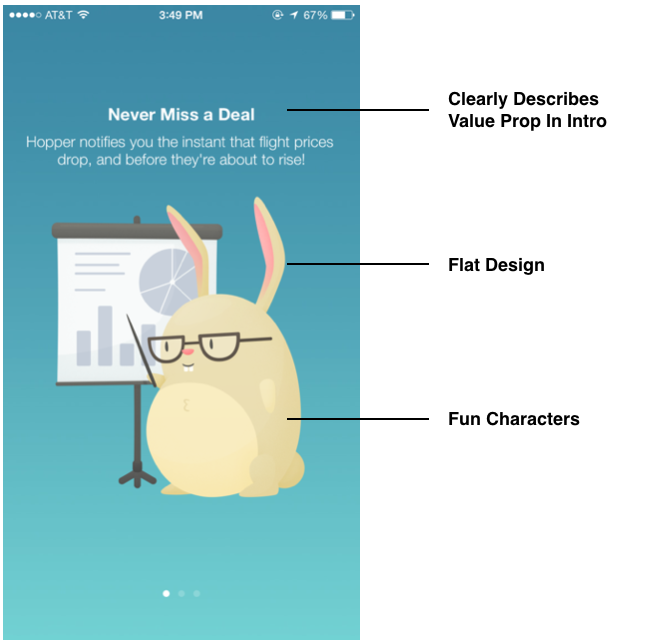

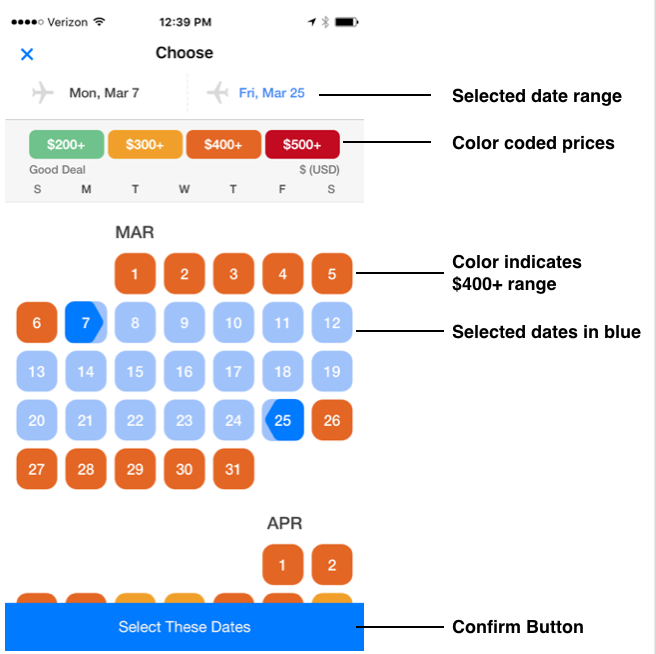
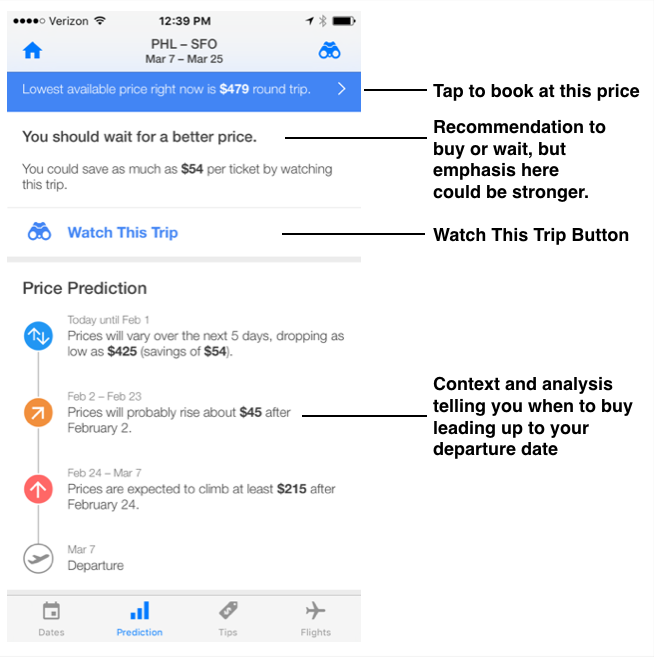
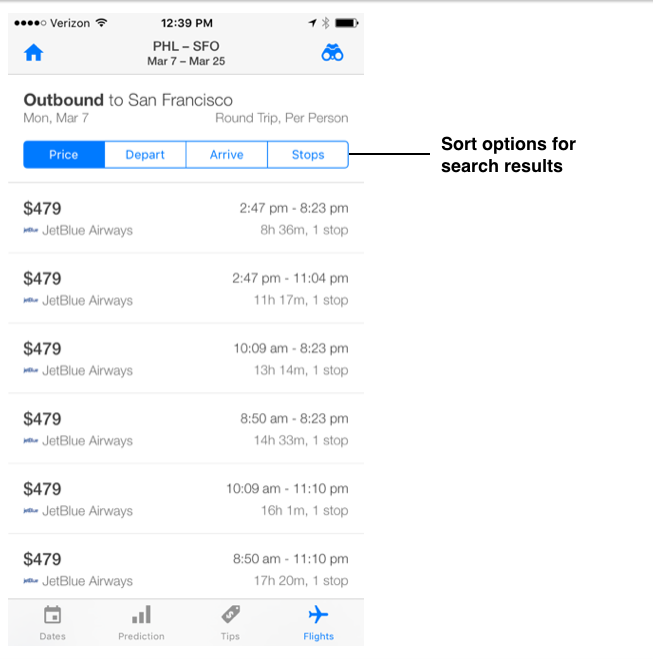
The output is equally easy to understand so that you can quickly make a decision.
- A color-coded calendar allows users to immediately identify the best time to travel or what to expect to pay during your desired time period
- Prices only show what it costs for a seat, so you're getting a true apples to apples comparison.
After selecting your dates with a couple taps and tapping "Select Dates," Hopper gives you a recommendation:
- At the top of the screen is an unequivocal Buy Now or Wait
- Below that is an analysis of the anticipated price fluctuations that lets you know how long you can wait before prices will go up
- Tap the blue bar at the top and you can select the flights and book directly within the app—a function few competitors offer.
2. Constant Connection
According to Hopper, the lowest price will be up in 2-3 days. Sometimes, a great deal is only up for a couple hours. Hopper's "watch the flight" functionality helps users stay on top of their search.
Sure other OTAs also offer price alerts that email you when the price on your flight drops, but you're not always on email. With Hopper, you can "watch the flight" and the app will notify you with a push notification so that you're more likely to book when you can get that low price.
3. Data + Context allows you to make a quick decision
Their proprietary algorithm also receives a real-time feed of airfare search data from a number of Global Distribution Systems (GDS), resulting from consumer flight searches made on OTAs globally.
According to Hopper, they collect, "about two billion priced trip itineraries coming from about 15 million daily flight queries." By analyzing that data, they can accurately tell you if prices are going to drop further or if they expect prices to increase, so you know what to expect if you're not yet ready to book. They provide this context not only with your initial search results, but also with the push notifications you receive if you're watching a flight.
Hopper told Tech Insider that it saves a typical user about $50 (and in some cases as much as $1,300) per flight.
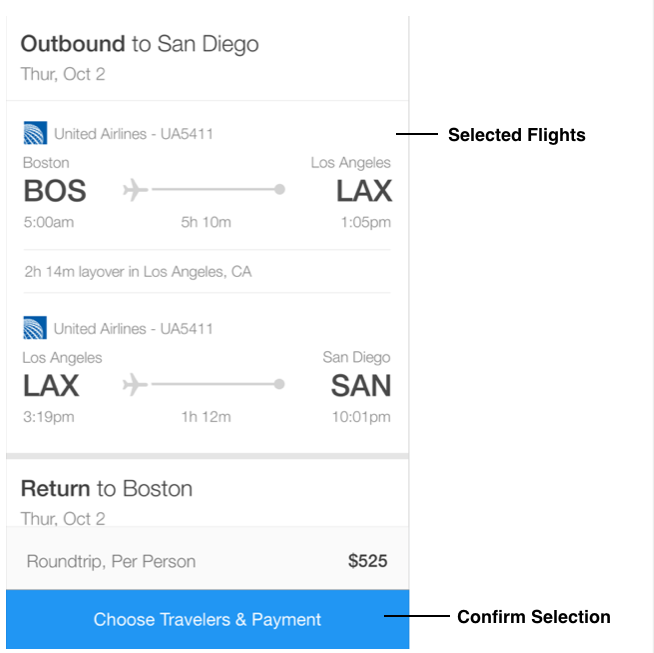
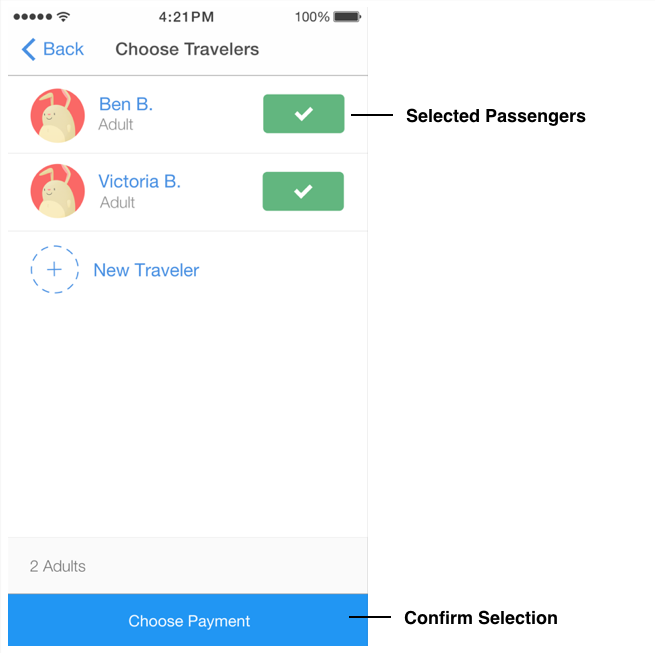
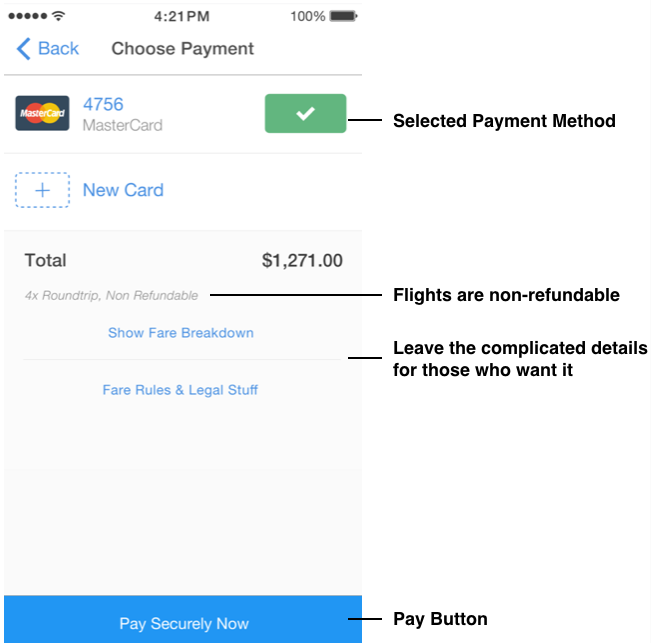
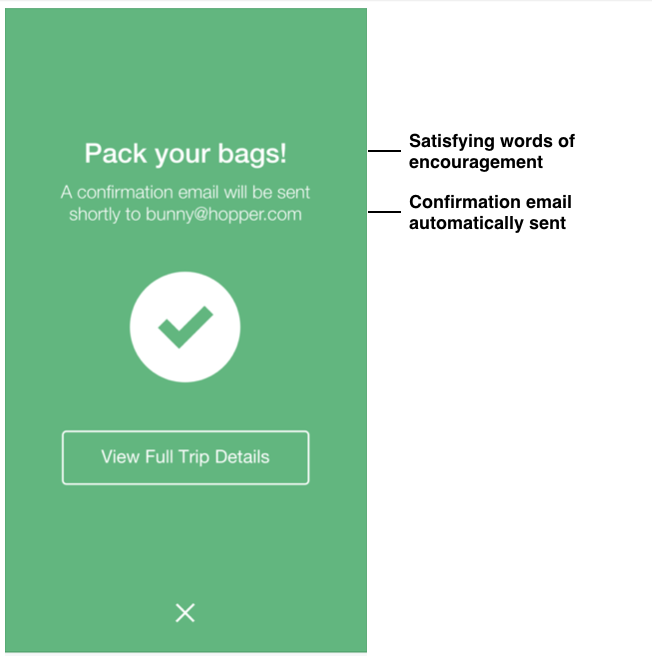
Because part of my winter travel itinerary was still in flux, these price predictions were invaluable for helping me pick which dates I should pick to depart on the next leg of my trip. I knew I was going to return to California to see family before returning back to campus, but it was unclear how long I would stay.
I used Hopper to understand how late I could make that decision and still get a low price. Eventually I booked a flight from LAX to PHL with a layover in Arizona and this was substantially lower than the last minute direct flight I would have purchased. I must have saved at least $100.
I'm already using Hopper again to plan my trip to San Francisco this upcoming semester. The push notifications have been reminding me to book my flights asap.
4. Hopper has already been gaining some traction with consumers.
Unlike other OTAs which charge 10-15% commissions that are baked into the prices consumers see, Hopper charges a substantially lower flat $5 per transaction made on their platform. That also translates into consistently lower prices for consumers. As of August 2015, the app has seen 1 million downloads and users have saved $15 million on airfare.
However, Hopper has some disadvantages that consumers are also keenly aware of. For example, Hopper also doesn't give you a lot of options with your flight that the other OTAs give you. You can't see prices for premium economy or any other add-on services you can normally buy. That's because Hopper is truly focused on getting you the lowest price and has made trade offs with its functionality and design to help you get just that.
Here's a chart showing how Hopper Stacks up to the other OTAs.
If Hopper wants to be more competitive going forward, it might consider:
- Linking to frequent flier programs
- Offering add on services (e.g. seat selection, premium economy) to attract travelers beyond the budget traveler segment
- Improving certain design elements like, highlighting their recommendation to wait a bit more if the price isn't optimal
5. The online travel market is still growing fast, but that doesn't mean there aren't major challenges for OTAs.
"The online travel market had gross bookings exceeding $150 billion in 2013, representing 38% of the global online market and 13% of the global travel market," according to Forbes. They also estimate that the online travel sales figure is estimated to be growing at 12% annually—meaning it's an area of extremely high growth. That's one reason this could be an attractive market to be playing in. But, the market is dominated by big players like Expedia and Travelocity, which drive a large percentage of category sales.
Furthermore, airlines are trying to take back some power from the OTAs. Some airlines, like Delta, aren't sharing their data with certain OTAs, like TripAdvisor and Hipmunk, anymore in an effort to make more demands on how their data is displayed. Other airlines like Lufthansa are using an additional "OTA fee" as a disincentive to booking via an OTA. Both are big risks factor for newcomers to the OTA game. If the trend continues and more airlines join the fight, Hopper's value proposition could be moot. Still, since the majority of sales are still done through OTAs and airlines need those sales, it's unlikely that this shift will happen quickly.
Currently, Hopper doesn't have data from American Airlines. This, combined with an already fragmented market in which each player is vying for attention makes for a very challenging environment for a new app.
So, Is Hopper actually #shentastic?
At the end of the day, Hopper is useful. Period. Its clean design and cute rabbit make it fun to work with. The predictive analytics and constant connectivity give it an added edge that the other OTAs just don't have. Plus, it's just satisfying knowing that you're finding (and not missing out on) the lowest price out there for your next flight.
Still Curious? Watch Hopper's video below.




